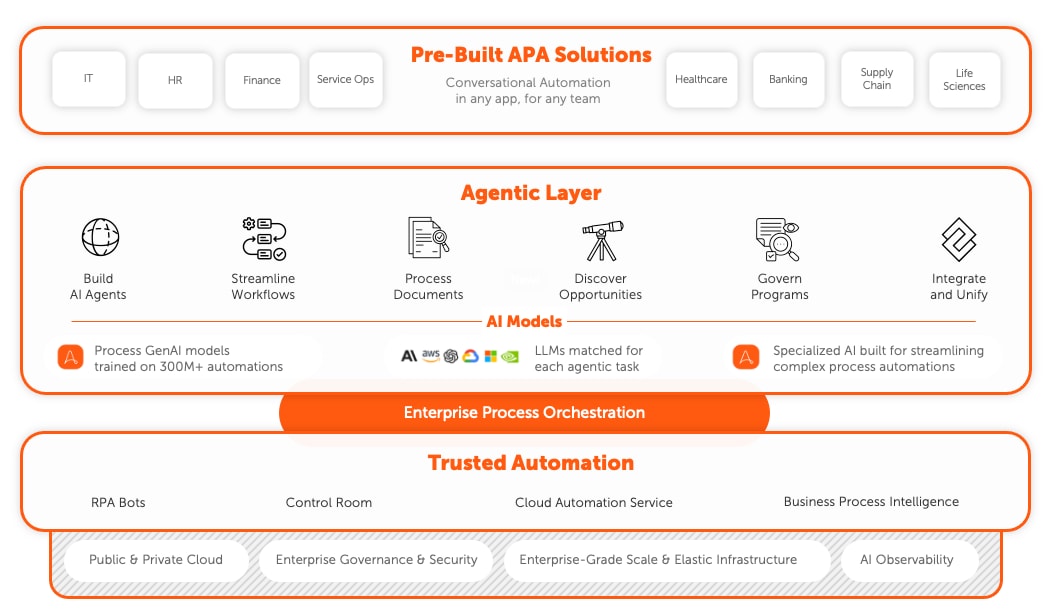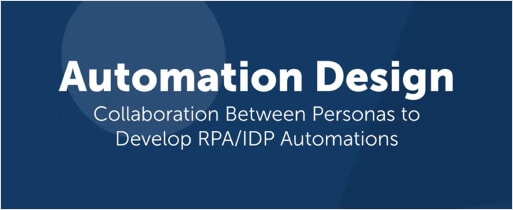What is intelligent document processing (IDP)?
Intelligent document processing (IDP) is a technology that extracts and organizes data from documents to fuel business process automation.
IDP combines optical character recognition (OCR) with artificial intelligence (AI) and machine learning (ML) algorithms to automate the processing of complex documents in variable formats. Unlike traditional OCR solutions, IDP can not only recognize and extract text from documents, it can also understand the context and meaning of the information.

Benefits of intelligent document processing.
By automating document processing, IDP reduces the time and effort required to locate, validate, and input data for business processes, allowing employees to focus on higher-value work.
Direct cost savings.
Reduce expenses by dramatically cutting costs to process large volumes of data.
Higher straight-through processing (STP).
Minimize the need for knowledge workers to process documents manually.
Scale.
The volume of digital documents only continues to increase; IDP offers a scalable solution to process large data volumes quickly and accurately.
Process efficiency.
Enables end-to-end automation of document-centric processes.
Accuracy uplift.
See immediate significant increases in data accuracy with the use of AI.
How does intelligent document processing work?
Data is at the heart of digital transformation, yet most business data is inaccessible, embedded in documents, emails, images, and PDFs. AI document processing makes any and all data accessible for business processing by converting unstructured and semi-structured documents into usable information to fuel automating document-centric business processes. IDP uses AI technologies such as natural language processing (NLP), computer vision, machine learning (ML), and generative AI to classify, categorize, and extract relevant information, as well as validate the extracted data. IDP tools are completely non-invasive, integration-friendly, and work seamlessly with Intelligent Automation to power digital operations.
Pre-Processing
The first step in intelligent document processing is pre-processing. This step involves binarization, noise reduction, de-skewing, and de-speckling. These techniques help to improve the quality of the document images before they are processed by OCR and AI algorithms. This ensures that the data extracted is as accurate as possible, minimizing errors in downstream processes.
Intelligent Document Classification
The next step is intelligent document classification. This step involves NLP, unsupervised and supervised learning, OCR, and Google Vision to classify documents based on their type and content. This allows for more efficient routing of documents to the appropriate processing workflows. To decipher difficult content, intelligent character recognition (ICR) takes OCR to the next level, applying AI to better identify glyphs and other textual elements that are difficult to read.
Data Extraction
The third step is data extraction, where AI algorithms are used to extract relevant data from the classified documents. This can include text, numeric values, and even images or signatures. Extraction employs NLP, deep learning, machine learning, OCR, and Google Vision.
Domain Specific Validation
The fourth step is domain-specific validation, accomplished by applying fuzzy logic, regular expression (RegEx), rules, and scripts to assess, match, and manage the extracted data for accuracy and relevance to the specific industry or business context. Additionally, enhanced validation with robotic process automation (RPA) can further verify the extracted data for suitability to the prescribed purpose or process.
Human-in-the-Loop Validation
Human-in-the-loop (HITL) validation is another component of IDP that increases the quality of automated data processing. HITL validation uses supervised learning to provide a rapid feedback loop and fine-tune AI training by correcting data via human input.
Applying IDP with Intelligent Automation.
Automation can reach only so far as data is available to work with. With standard RPA-driven automation systems, setting up data extraction to run automations is often a separate third-party project, which adds ongoing costs as well as fragile integration points.
Effectively extracting data and structuring information is the gateway to automating the lion’s share of business processes that rely on manual inputs and intervention today. Embedding intelligent document processing within a comprehensive Intelligent Automation platform enables business users to automate processes end-to-end. When IDP and Intelligent Automation live together within the same platform, you have the biggest pieces of the automation puzzle working in sync, effortlessly.
Start processing data. Fast.
Integrated, Intelligent Automation platform-native IDP tools are easy to set up, often 5-10x faster than other approaches.
Lower processing costs
AI-driven IDP + Intelligent Automation improves straight-through processing (STP) by continuously learning from human feedback.
Business user friendly
Built-in IDP makes it easy to get started with pre-packaged use cases to choose from for the most common document processing scenarios.
Powerful for developers
Enhance document extraction by modifying AI workflows with the ability to add custom logic (Python scripting).
Process any document
Accelerate digital transformation by combining automation with IDP, which can handle structured and unstructured documents in almost any format.
Secure and reliable document handling
Securely scale document processing operations and regulate data capture to extract the right information to get the job done, every time.
Self-improving document processing
Built-in AI allows for increased return on investment over time as IDP learns and improves.
Plug-and-play data capture tools
Access a larger toolset, such as specialized OCR technology, to support unique use cases.
Extraction use case library
IDP embedded within Intelligent Automation software can include preset extraction packages that can be applied immediately to the most common document processing scenarios.
IDP applications across industries.
Intelligent document processing software is ready to extract and organize data across industries and business functions, right out of the box.
Banking and Finance
Automate loan application processes, digitize paper records, and extract data from financial documents such as invoices and bank statements.
Healthcare
Digitize patient records, process insurance claims, and extract data from medical forms to improve accuracy and speed up the billing process.
Insurance
Automate claims processing, extract data from policy documents, and improve fraud detection.
Manufacturing
Automate document-heavy processes from supply chain management, to invoice processing, to quality control.
Accounting and Finance
Automate invoice processing, expense management, and financial report analysis and accelerate tax filing and audit.
Human Resources
Accelerate employee onboarding processes, manage resumes and job applications, and extract data from HR forms.
The evolution of intelligent document processing.
From OCR to generative AI, intelligent document processing technology continues to advance and play a central role in automating business processes.
Data entry
Document processing has long been a labor-intensive and time-consuming task for organizations. Data entry represented a full-time effort in and of itself. For decades, optical character recognition (OCR) provided the only data extraction solution, enabling partial automation of data capture by converting images into text. OCR solutions applied templates to map extracted text into a usable structured format.
OCR made easy
With the rise of computing and digital documents, the amount of business data increased astronomically. Initial document processing solutions provided user-friendly interfaces atop OCR functionality. This added accessibility, making it easier to connect OCR output with desired data fields.
Enter IDP
Intelligent document processing gets its name from the AI technologies that power its data extraction and transformation capabilities, extending automation beyond structured and semi-structured documents to unstructured information. At the core of most IDP solutions are machine learning (ML) models that address a specific range of use cases, such as invoices or mortgage documents, enabling high-accuracy data extraction and processing but requiring extensive training.
IDP and generative AI
Recent advancements in AI have led to transformative change in IDP technology. Driven by the emergence of generative AI and the integration of large language models (LLMs), innovations have opened up new possibilities for automating documents that could not be automated before.
Top use cases for IDP.
With its ability to accurately extract and transform data from diverse document types, IDP has near-limitless applications to document-based tasks and workflows.
Streamline
supply chain. Use IDP to process barcodes, manifests, invoices, and more, for rapid supply chain operations from orders through accounts payable processes.
Digitize
Use IDP document scanning to convert paper-based documents into machine-readable file formats (PDF, Microsoft Word, etc.) with searchable text for optimal performance.
Assemble
documents and reports. Pull data from multiple sources and populate document templates to produce in-depth reports, complex legal documents, and much more.
Extract
the right information. Intelligent capture seamlessly pulls the information you want from documents for further processing, storage, and use in other applications.
Manage
documents and data. Store and organize documents for easy retrieval or archiving and automate record retention requirements compliance.
Put your data to work with Intelligent Automation.
Document Automation is built into the Agentic Process Automation System to seamlessly bring document data into any process and accelerate end-to-end automation.











